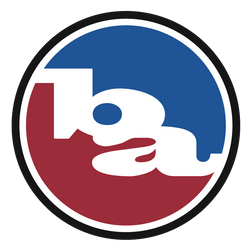If you have ever passed through Dinétah (Navajoland) and have been in awe of the landscape such as Bears Ears in Southern Utah, the Shiprock formation in northwest New Mexico, or Comb Ridge along Highway 160 in Northern Arizona. Chances are; just like those mentioned, and most engrossing geographical features have an Indigenous story attached to them. Dinétah is 27,000 square miles and our genesis is dispersed everywhere.
Growing up, my favorite stories were about the journey of the Twin Warriors. Without getting too convoluted, the twins were created by the holy people to rid the earth of monsters, so the Diné (Navajo) people can live in peace and prosperity. Some of those slayed monsters are shaped in the landform. But the twins did not destroy all the monsters. Some still live today. They were left alive for our Diné people to battle and build resilience. Examples are the monsters of poverty, or laziness. The tale of these monsters helps in shaping the behavior or social norms for the younger Diné people. Had it not been for a bikepacking trip on the Chuska mountains in Dinétah, I would not have known the monster of laziness was located on the eastern side of the Chuska range we were riding.

One of our company missions is building a bikepacking community throughout the Navajo Nation. We have done youth outreach programs, presentations at tourism conferences, and seminars at bike events. At a bike race in the Chuska mountains we approached the committee about setting up a display of loaded bikes, ultralight camp gear, camp cooking stoves and more in hopes of sparking some bike packing interest. We took enough stuff to outfit six riders just in case. By the afternoon, we recruited Daniel and Randy to ride a viewpoint and camp that night, which was also the turnaround point for the race.
After short introductions and setting them up with gear, we were off to “top of the world,” to sleep in the dirt. Daniel, a side sleeper carefully selected the BA Sidewinder SL Sleeping Bag and a Divide Insulated Sleeping Pad from our gear library. Randy borrowed some panniers, and a light weight cook system to complete his kit. We departed the venue in the early evening and pressed south on the clearly marked race route, climbing perfect double track, stopping for views and snacks. It was so good to hear Daniel’s interpretations of our Dine stories, his extensive knowledge of plants, how they are used as dyes and their ceremonial use. Randy’s connections with the land and growing up on the reservations mirrored mine. We took the time mid ride to listen whole Heartly to each other and learn something new. It was Daniel that pointed out the mountain that represents the monster for laziness on our way back. This was one of my most memorable trips.

Our ancestors used to do multiday travel to social events and ceremonies by horse loaded with camp gear, and this feels like a new way to connect to other relatives. To keep our stories and traditions alive. Our hopes are to continue to do more bikepacking outreach and get our Diné folks stoked on riding loaded bikes and spending quality time on the land. We plan to do this by getting involved in more races, existing youth programming with other biking organizations. Thank you, Big Agnes, for helping us fulfil our mission.
Jon Yazzie is a Big Agnes ambassador, and co-owner and guide for Dzil Ta’ah Adventures, an Indigenous bikepacking and adventure company on the Navajo Nation. With his partner and co-owner Nadine, their mission is to create a bikepacking community in the nation. Their commercial tour proceeds help develop routes, stock and maintain a gear library and more.


 English (EUR) | EN
English (EUR) | EN 


